Sofa or armchair – or even both? We show you how you can place seating furniture beautifully and practically in the room
The only comfortable sofa is in the living room. But how best to place them indoors? And how can you combine armchairs, ottomans, etc.? We’ll show you 7 ideas for arranging seating in the living room – for small and large rooms.

-
Combine sofa and pouf
If the living room is not very large, often only one sofa fits in it, which then becomes the focus and center of the room. A small two- or three-seater sofa can be complemented by a sturdy upholstered pouf. Not only can you rest your feet on it, but it can also serve as a side table or additional seating. Depending on the purpose, the pouf can be moved quickly – but does not take up much space.
Ottomans take up more space than poufs, but the furniture can still be moved flexibly and quickly to the desired location. Most sofa manufacturers offer ottomans with the same cover for two or three seats – if it’s free, it’s an extra seat for discussion, if you push it against the sofa, it will create a small yard.
-
A sofa and two lounge chairs are placed on the side
If you want to offer additional seating options in a rather narrow living room, this arrangement variant can be interesting: Two graceful lounge chairs perpendicular to the sofa do not take up much space – and can also be moved back and forth if necessary, for example to create a more spacious atmosphere. comfortable or so you can watch television together.
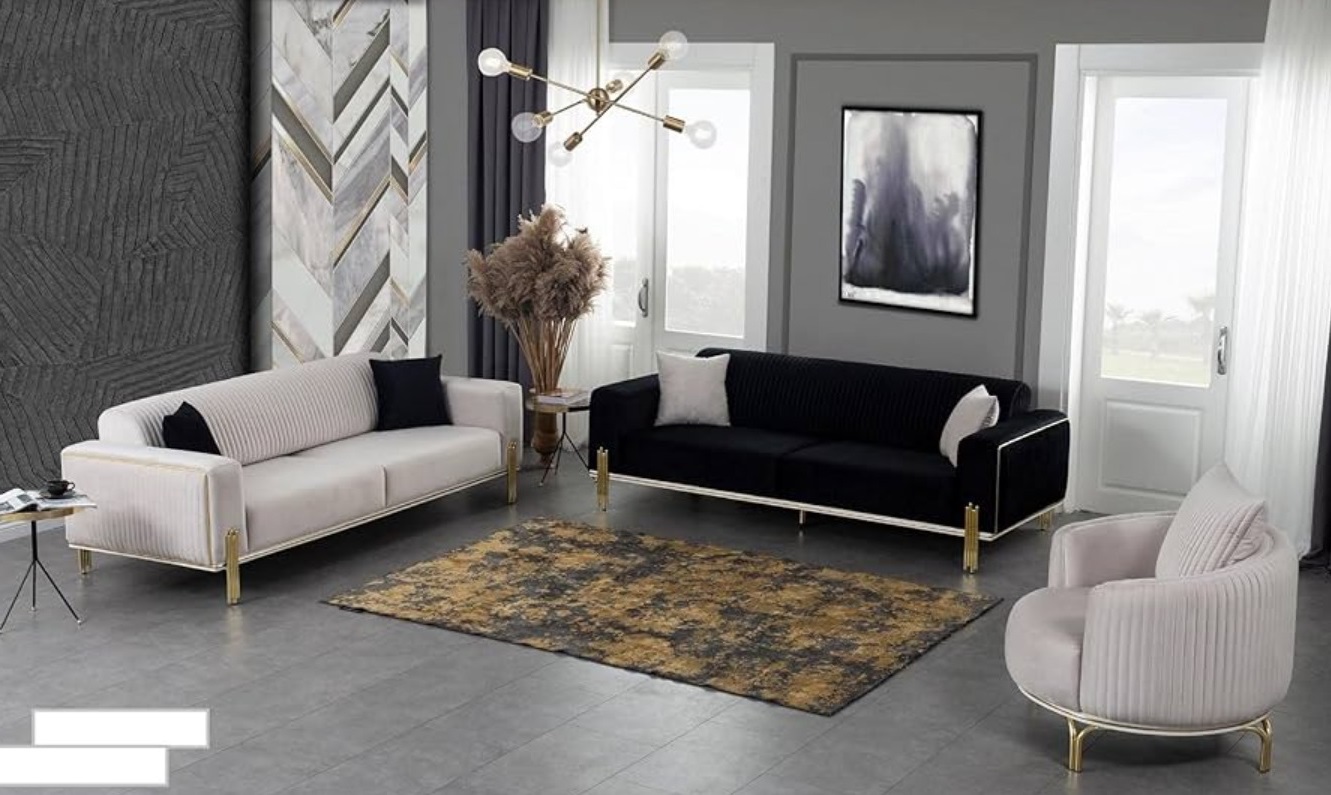
-
Place two sofas perpendicular to each other
More comfortable, but also taking up more space, are two sofas located perpendicular to each other. In a small living room, it is best to place both upholstered pieces of furniture with their backs against the wall so that there is still enough space for a walkway.
In a large, open room, two corner sofas can form an island and structure the area. One of the sofas can be freestanding in the room and the other against the wall, or both can be freestanding in the room. Of course, it can also be used with corner sofas.
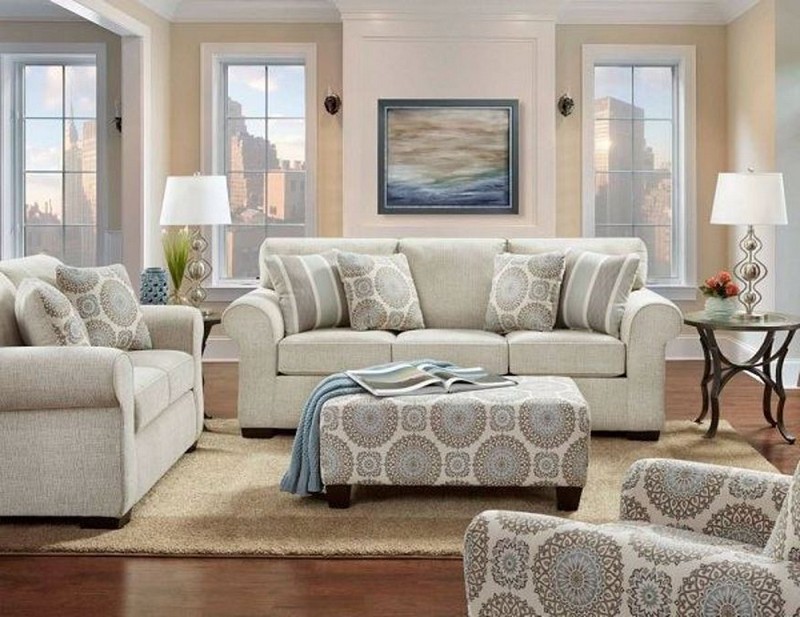
-
Place the sofa and two armchairs facing each other diagonally
If you have enough space in the living room and like a slightly looser arrangement, you can place two upholstered chairs opposite a two- or three-seater sofa. They are invited to stand at a slight angle to each other – this brings a relaxed atmosphere into the room and encourages conversation. But be careful: a small living room can quickly look messy with this arrangement.
-
Sofas and armchairs
If you only combine one armchair with a sofa, it is best to place it not perpendicular, but at a slight angle to the sofa to form a small seating area in the living room.
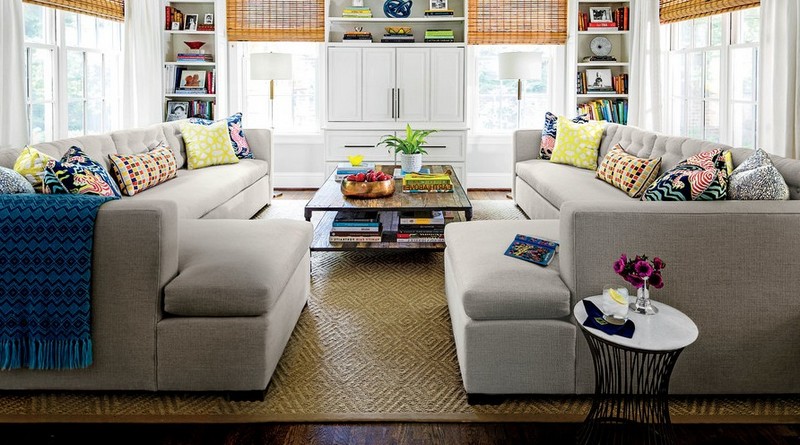
-
Place two sofas facing each other
Most sofas lean against the wall. Furniture can also easily occupy the center of the room in a larger living room. The best way to feel comfortable is to place two sofas facing each other. The style doesn’t always have to be the same – two different sofas with matching covers or shapes will have a more casual look and are often more comfortable. If you like and have space, you can add an armchair or lounge chair to one end of the two sofas, so that the seating group appears independent.
Especially in a large living room with lots of doors, two sofas facing each other in the middle of the room can be useful because they create a clear path. The only drawback: the television only has space on the front side.
Tip: Place sofas about 1.50 to 2 meters apart. A coffee table fits in between, so your legs don’t get in the way, but you can still have a good chat.
-
Place two recliners next to each other
Do you primarily use your small living room for watching movies, or do you always want to look out over the fireplace? Then simply place two recliners next to each other! This way everyone can see the best action and can stretch their legs. You can easily turn your head to the side to carry on a conversation.
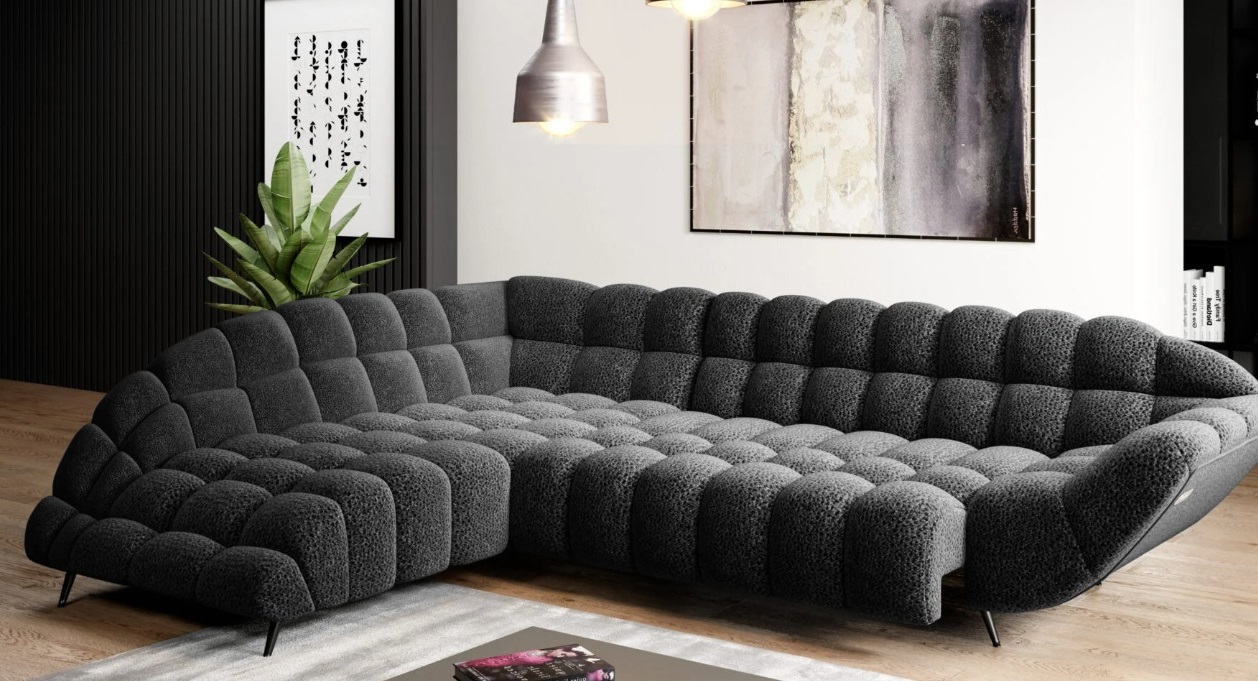
A detail and intriguing History of the Living Room lounge
A sofa is a type of seating furniture that generally accommodates multiple people and is commonly used for seating in a living room or family room. It is typically made of fabric or leather and features armrests and headrests. Some sofas come with a recliner mechanism or a fold-out bed for sleeping.
A sofa is a form of furniture used for sitting. Furniture refers to items or decorations used to enhance a space and make it more comfortable. Sofas are typically the primary seating option in a living or family room and are utilized for leisure with guests. Additionally, sofas can serve as partitions within a room. Sofas are crafted from various materials such as fabric, leather, and synthetic materials, with diverse designs to suit user preferences and requirements.
Sofas have been present since ancient times in Egypt and Greece, but the sofas of that era were not akin to the cushioned couches we see today. These “sofas” were essentially sturdy wooden benches and continued to be used until the 16th century. The concept of sofas as comfortable lounging furniture emerged in the 1680s, influenced by the cushioned chairs at Versailles.
The initially firm canapé transitioned from a chair designed for multiple sitters to one with added cushioning. Its introduction marked a significant shift in furniture design. Prior to the creation of sofas as we recognize them today, furniture primarily served utilitarian purposes, promoting rigid and upright posture even during rest. The transformation of seating from purely practical to comfortable may have signaled the earliest form of relaxed private life. While we cannot confirm if the 17th and early 18th-century French individuals reclining on genuine sofas were as comfortable as per today’s standards, historical images and accounts suggest their comfort by the standards of that time. The adoption of sofas and other comfortable seating options was driven by the perceived conveniences they brought to daily life.
During the same period when sofas first emerged, people started engaging in leisure reading, cotton textiles became widely accessible, and the concept of “casual attire” began to take shape. Enlightenment philosophers delved into the “art of living” for the first time, with lifestyles undergoing rapid changes. However, some individuals viewed this shift away from formality as disorderly. According to DeJean, members of the aristocratic court adopted relaxed postures, resting their arms on sofa backs and bending their legs. The regulations governing who could sit and who could stand were aimed at upholding an invisible hierarchy, but the introduction of cushions led to a change in these norms.
Just four years after the introduction of sofas, the king’s brother-in-law wrote to his cousin, noting that protocol and etiquette had been completely discarded. In the salon, individuals, including lower-ranking officers, reclined on the couch. However, the surprised aristocrats were unaware that this relaxed posture fostered a new elite identity and facilitated leisure activities. Specific rules on how to sit on particular couches outlined the most aesthetically pleasing manner of reclining or stretching. Sitting on a couch became a form of performance, and improper interaction with the furniture could lead to someone being perceived as “common.”
In any case, the couch quickly became popular, spreading throughout Europe and across the Atlantic. French craftsmen and brands introduced chaise lounges, canapés, settees, and loveseats—the latter not for couples to snuggle on, but to accommodate the wide skirts of 17th-century women. In England, Lord Philip Stanhope, the fourth Earl of Chesterfield, had a sharp eye for fashion and wanted a chair where well-dressed guests could sit comfortably while maintaining their posture and poise. Consequently, the Chesterfield sofa was commissioned. It appeared comfortable, although still in a formal style. People didn’t slump onto it as we do today while watching TV. The general perception was that English furniture was more comfortable than French furniture, and for the 18th century, the Chesterfield seemed to confirm that. Sherlock Holmes reportedly used it in a casual manner.
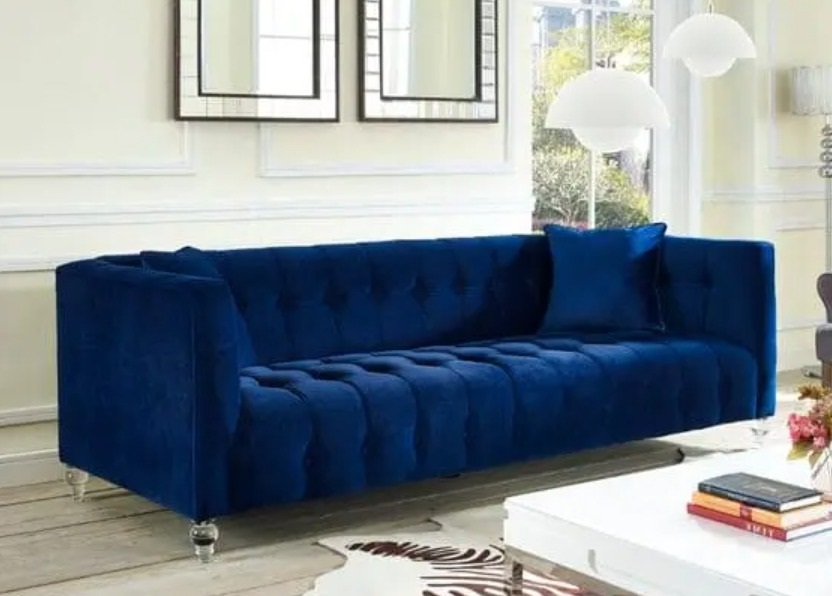
Sofas in the US
American furniture began to change in the late 17th century due to the emergence of the colonial upper class. With wealth came leisure, and furniture changed to cater to this new “leisure attitude.” Yet again, while furnishings became softer, comfort still had a different definition than it does today. Feeling at home was still such a foreign concept that there was no precise word to describe it. “Comfortable” meant “capable of being entertained” rather than “being immersed in something luxurious.” However, all of this changed with the rise of the middle class. This change was what shaped the modern world because it spurred a widespread demand for products. Mirrors, carpets, dining tables, wardrobes, and most importantly, sofas. Demand increased, mass production was born, and furniture makers began producing simple, pattern-cut furniture.
Entertaining also evolved during the Victorian era, which consequently influenced the design and style of sofas. Prior to this era, when guests were invited, the living room chairs were arranged in a formal circle, which made the flow of conversation feel rigid and regimented. What can one do in a small living room with six regular living room chairs? We can’t bear sitting in those chairs ourselves, so imagine what it would be like if one sat comfortably in their “easy chair” and had their guests sit stiff and uncomfortable around them in their suits. The solution? A comfortable sofa.
The living room became the nucleus of the home, and the “sofa corner” became the “heart of the heart.” Lengthy sofas, such as the camelback sofa, began to appear in homes, featuring splayed arms and a curved, “humpback” back. When the Victorians hosted larger gatherings, they would push two sofas together, effectively creating a sort of rudimentary sectional sofa. These pieces of furniture were comfortable by their standards, but today, many people probably wouldn’t be inclined to snuggle up on them.
The Emergence of the Davenport Sofa and the Cutaway Sofa
As the culture of sitting evolved, so did the sofa. In the 1910s, the affordable “Davenport” design was introduced, making the sofa a common feature and gradually changing the living room into a family room. Modern eyes might recognize that the Davenport sofa was the closest thing to a comfortable sofa today, and it was so popular that people started calling them “davenports,” like a hot tub that was interchangeable with a Jacuzzi. The Davenport sofa of that time had removable cushions, springs under the seat, and a plush cushion that one could sit on.
The cutaway sofa gained popularity in the 1930s when designer Russell Wright introduced the style as part of his “Modern Living” furniture line to meet the needs of apartment dwellers. This modular three-piece design had great space-saving potential as it could be arranged and rearranged according to the available square footage of the living room. The intent was to ensure that this beautiful set of furniture, suitable for both apartments and houses, could fit anywhere without the need to hide it. The pieces could be added or removed, making it suitable for small apartments and expandable for larger rooms, catering to people who may not stay in one place forever.
Wright’s designs allowed for the creation of different furniture configurations such as a loveseat with two end pieces and a patio chair or a fireside bench with a center piece. Some styles were rectangular, similar to those found in stores today, while others were circular, available in four pieces. The “old” approach emphasized the newness of the design and aimed to appeal to the eye. The intention was to make modern furniture enhance indoor living comfort.
In the mid-1950s, conversation rooms became popular, creating an intimate atmosphere for gathering and integrating into the multi-level postwar home. According to a 1963 Time magazine article, these conversation rooms provided a place of solace during parties or for relaxation with family. It was a space where the more serious could engage in discussions in the basement while others relaxed on the ground floor. Some families even viewed these spaces as retreats.
However, not everyone took conversation rooms seriously. Time humorously mentioned that guests who had consumed too many cocktails during a party might stumble into the conversation room, as if falling into a trap. Those engaging in philosophical conversations in these rooms could easily get distracted by passing cuffs and stiletto heels at eye level. Eventually, the appeal of these sunken living rooms waned around the same time as the social changes of the 1960s. Although they can still be found in time capsule homes, contemporary versions also exist.
During the 1960s and 1970s, sofas primarily returned to standalone pieces rather than being incorporated into the architecture of the home, although wooden platform styles and designs with built-in tables were still available during the mid-century era. This period saw the release of several iconic sofa styles, from Jean Royère’s Polar Bear to Lignet Roset’s Togo, which continues to be sought after today. The availability of new materials made sofas in a variety of colors popular, and the range of fabrics allowed for more customization. Initially, silhouettes were slim during this period but began to become looser by the 1970s. Designer sofas, along with branded appliances and high-end building materials, became somewhat of a status symbol in households during this era, and to some extent, they still are today.
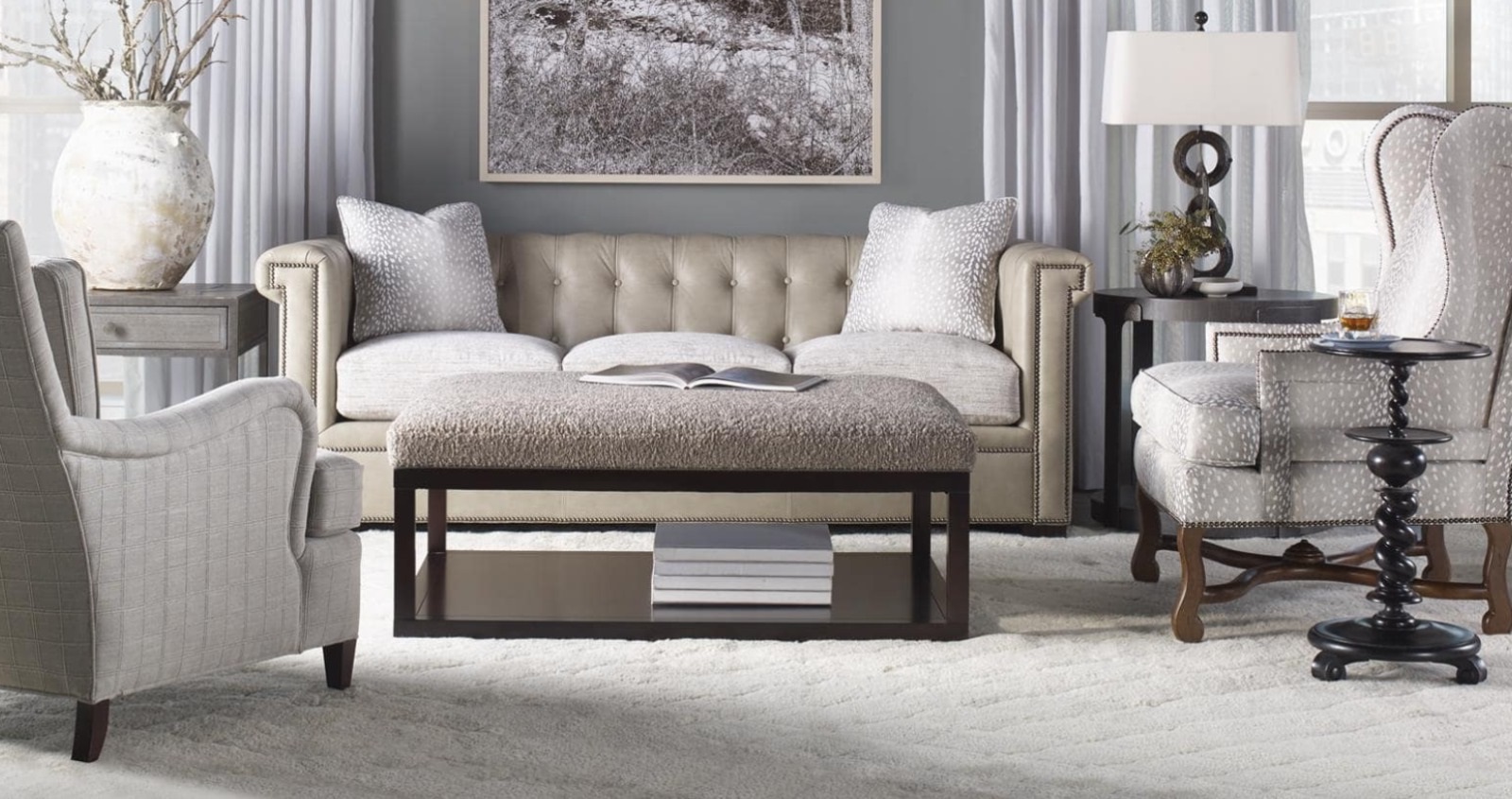
In the mid-1990s, sofas transitioned to become increasingly casual and comfortable when upholstered, tufted, and rumpled shabby chic styles became a major trend as a direct response to the flashy designs of the 1980s. In the 1980s, people viewed their rooms as a showcase, investing significantly in every detail without much concern for comfort, as the rooms were primarily meant for entertaining. However, in the ’90s, there was a shift towards creating more comfortable living spaces, as people actually began spending more time there, coming home to relax, take off their shoes, and watch TV.
Rachel Ashwell, who began her career as a designer for period films, unveiled the “shabby chic” style in 1988, featuring loose and slipcovered sofas with a romantic and inviting look. Although shabby chic slipcovers were not the only type available, they became part of the relaxed atmosphere of the ’90s. Their usage indicated a shift in home fashion from the plastic sofa covers used to preserve furniture. They helped make traditional spaces more contemporary and provided a way to change the look without discarding existing items.
It is evident that these slipcovers endured due to their practicality, performance, and stylish appeal. While the frills and embellishments of the “shabby chic” aesthetic have mostly faded, many now opt for clean-lined sofas and sectionals inspired by mid-century modern designs. Overstuffed sofas continue to be popular, especially as they now serve various purposes beyond mere relaxation, such as dining, remote work, binge-watching, and napping. Fabrics are becoming more durable or treated with special stain-resistant coatings to withstand spills and dirt from pets and children.
Sofas have become an integral part of people’s lives, evolving to offer larger and more comfortable lounging spaces. Designs are now more multifunctional, featuring pull-out beds or concealed storage compartments. Sofas reflect the current times by focusing on creating a comfortable sanctuary in an often overwhelming world.
Presently, sofas are crafted with diverse designs and materials tailored to meet users’ needs and preferences.
SOFA MODELS
Loveseat Sofa
A loveseat sofa accommodates two people and is typically smaller than a regular sofa, making it suitable for smaller rooms such as living rooms, reading nooks, or bedrooms.
Loveseat sofas boast a minimalist design compared to regular sofas but offer the same comfort and elegance. They can be fashioned from various materials such as leather, fabric, rattan, or wood.
Sectional Sofa
A sectional sofa comprises multiple parts that can be arranged or separated according to requirements. These sofas can be configured into L-shapes, U-shapes, or combined with tables or chaise longues.
Ideal for larger, spacious rooms like living or family rooms, sectional sofas are available in various shapes and sizes. They boast a more contemporary and dynamic design compared to regular sofas and serve various purposes such as seating, sleeping, and movie-watching.
Chesterfield Sofa
A chesterfield sofa possesses a distinctive design with tufted and rolled arms, exuding a luxurious and elegant appearance.
Typically crafted from classic stitched leather with prominent varnish, chesterfield sofas feature threaded patterns that contribute to their lavish and elegant look. First introduced in 18th and early 19th century England, these classic sofas complement various interior styles, from traditional to contemporary.